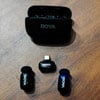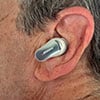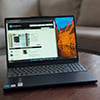Inflation is high, the economy looks shaky, and a trade war with China could push up the price of new electronics. Those are some good reasons to consider replacing your aged gear now with a sufficiently newer used product. But be careful if you're shopping for a PC. This week, Microsoft ended support for the Windows 10 operating system – meaning no more bug fixes, including security patches. (Unless you sign up for extra support, which I'll discuss towards the end.) Yet a spot-check of major online vendors of used products turned up several models that don't appear to meet Microsoft's minimum requirements for its free upgrade from Windows 10 to Windows 11.
And you don't need just any version of Windows 11. On November 11, Microsoft will discontinue support for older versions of Windows 11 Home and Pro. You'll need to make sure that your PC can update to the very latest version of Windows 11, called 24H2. Systems that can't be upgraded will still run, but without access to updates they will be vulnerable to hackers who could see this as a golden opportunity to compromise a vast number of systems.
It was surprising, then, to find obsolete models still offered on major e-commerce sites. (I’m not mentioning which ones at the moment, while I take time to investigate further and ask for a response from the companies.)
How to Spot a PC that Can't Run Windows 11
An aged processor is the easiest way to spot a PC that isn't up to the task. And by "easy," I mean not as hard as the other ways.
All the suspect PCs I found run Intel processors, although you may find other obsolete models running AMD chips. Intel produces a wide range of CPUs, many of which sound very similar. Microsoft lists over 150 versions of the Core i5 that do support the latest version of Windows 11. That list does not include the following chips, which I found in models for sale online:
- Core i5-6200U
- Core i5-6300U
- Core i5-6500T
- Core i5-7300U
You may see a pattern here. As a rule of thumb, 8th Generation and higher Intel processors support Windows 11: That is, model numbers starting with 8000 or higher. Most older models won't run Windows 11, or won't run it well. That said, you should check Microsoft's full list of supported processors to be certain. Here are some key resources to check Windows 11 compatibility for your current PC or one you are thinking of buying:
List of Intel processors supporting Windows 11, v. 24H2
List of AMD processors supporting Windows 11, v. 24H2
But many older systems won't run the new operating system at all, due to the new security requirements of Windows 11. These are often tied to the CPU and include having an encryption processor called Trusted Platform Module (TPM) version 2.0. That and other requirements, such as "Unified Extensible Firmware Interface" really get into the weeds. So in general, look for 8th Generation Intel processors (and confirm on Microsoft's list), or check the list of compatible AMD processors.
The other minimum requirements are:
- 4 GB of RAM
- 64 GB hard drive
- High definition (720p) display
- Compatible with DirectX 12 or later with WDDM 2.0 driver
- A free Microsoft online account
- Windows 10 already installed
Keep in mind that these are the bare minimum requirements. If you’re buying a computer, you should consider doubling the RAM to at least 8GB and storage to 128GB to ensure your new or refurbished device will last at least a couple of years. This is the full list of Windows 11 system requirements.
Read more: Logitech’s Solar Keyboard Never Needs Charging
If you are stuck with a system that can't be upgraded and don't have the time or money to get a new system right now, you can buy yourself an extra year by signing up for the Windows 10 Consumer Extended Security Updates (ESU) program. It requires a free Microsoft account and provides security patches – but no new features or bug fixes – through October 13, 2026. Microsoft offers the ESU free if you sync your PC settings to OneDrive, or for $30 if you prefer not to.
Read next: AI, OLED, and 17 Hours of Battery Life – On a Chromebook? Yes.
[Image credit: Microsoft]
















